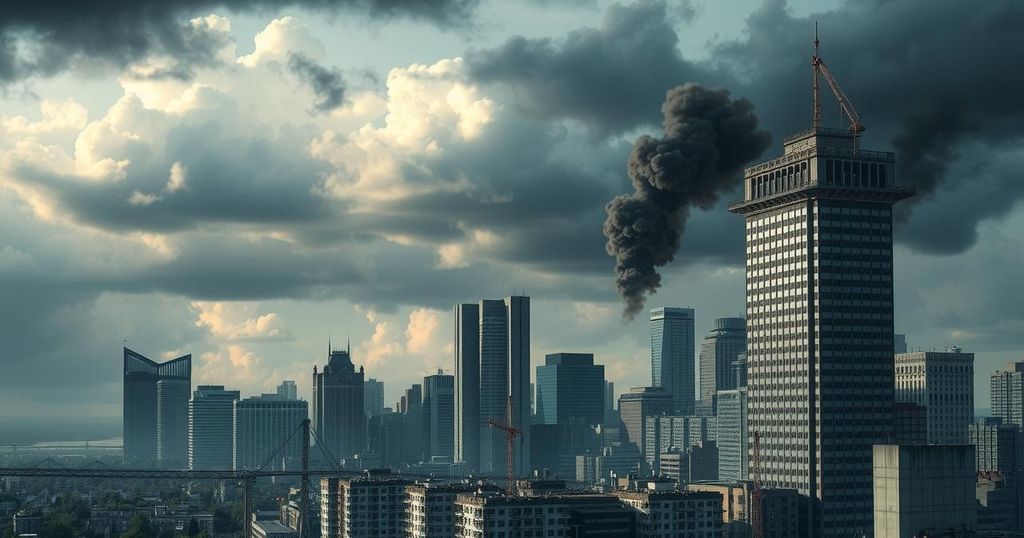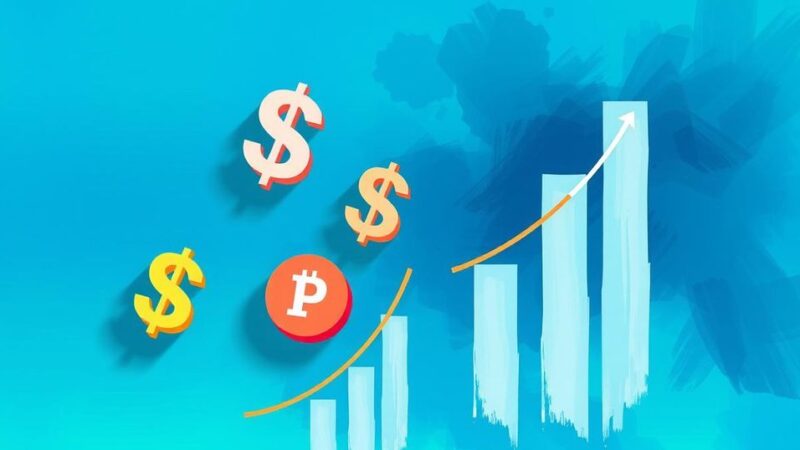Iran’s economy is facing drastic challenges, including high inflation surpassing 45 percent, a currency in freefall, and an increasing poverty rate. The reinstated U.S. sanctions under President Trump’s “maximum pressure” campaign are compounding these issues, leading to a rising cost of living. As Iran’s leadership grapples with public discontent and economic duress, potential negotiations with the U.S. add a layer of complexity to the situation.
Iran’s economy is experiencing a severe downturn characterized by rampant inflation, a plummeting currency, and escalating poverty levels, which are affecting millions of citizens. This economic crisis has worsened since U.S. President Donald Trump reactivated his “maximum pressure” campaign, which has involved imposing stringent sanctions aimed at congealing Tehran’s economic activities. As evidenced by the current state of affairs, the situation calls for urgent commentary from Iran’s Foreign Ministry regarding these developments.
The financial struggles in Iran have led to skyrocketing costs for essential items, with inflation exceeding 45 percent and nearly half of the population now living below the poverty line according to the Statistical Centre of Iran. The prevailing conditions have resulted in increased frustration among the populace, compelling the Islamic Republic’s leadership to contemplate a response.
Under President Trump’s directives, the United States has reinstated sanctions that have begun to take a significant toll on the Iranian economy. In light of these sanctions, President Trump has indicated a readiness to engage in negotiations while simultaneously warning against Iran’s advancements in its nuclear program. Afshin Molavi, a Senior Fellow at the Johns Hopkins University’s Foreign Policy Institute, noted the crucial impact of mismanagement and corruption within Iran as contributing factors to its economic distress.
The Iranian currency has suffered a historic devaluation, reaching a low of 928,000 rials per dollar, marking a substantial drop that exacerbates inflation and diminishes purchasing power for imported goods. Additionally, soaring housing costs demonstrate an alarming trend, with rent in Tehran increasing twenty-fourfold over the past dozen years, while salaries have only risen about twenty times.
Consequently, the oil sector—a vital part of Iran’s economy—is under severe pressure following the reinstatement of sanctions, which threaten to reduce oil exports to zero. Given that oil revenue constitutes nearly half of Iran’s government income, this policy notably intensifies existing economic difficulties. As stated by Afshin Molavi, “Iran’s oil revenues have been able to paper over many of the structural faults in the economy.”
While President Trump has opened channels for potential negotiations, he has issued stern warnings that Iran must not pursue nuclear weapons, implying that failure to comply could result in severe repercussions. These statements reflect the complex and precarious nature of the current U.S.-Iran relationship as the Iranian government grapples with each new economic challenge amidst rising public unrest.
Iranian President Masoud Pezeshkian has acknowledged the overwhelming economic challenges faced by the nation, asserting that efforts are underway to alleviate the burdens on citizens. Meanwhile, President Trump has commented on Iran’s perceived fearfulness, saying, “I think Iran would love to make a deal and I would love to make a deal with them without bombing them.”
As the crisis deepens, it remains uncertain how the Iranian government will navigate its next steps. Whether through diplomatic engagement, economic reforms, or further confrontational measures with the United States, Iran must make critical decisions that will impact its welfare. As millions of Iranians endure heightened difficulties, they await clarity on the future amidst a rapidly deteriorating situation.
In summary, Iran’s economy is in a precarious state due to U.S. sanctions and internal mismanagement, leading to severe inflation and growing poverty. The Iranian leadership faces mounting pressure to address these issues, while the public endures significant hardships. President Trump’s policies, coupled with rising tensions over nuclear aspirations, present complex challenges for both Iran and the U.S. moving forward. The way forward remains critical as Iran weighs its options amid escalating crises.
Original Source: www.newsweek.com






